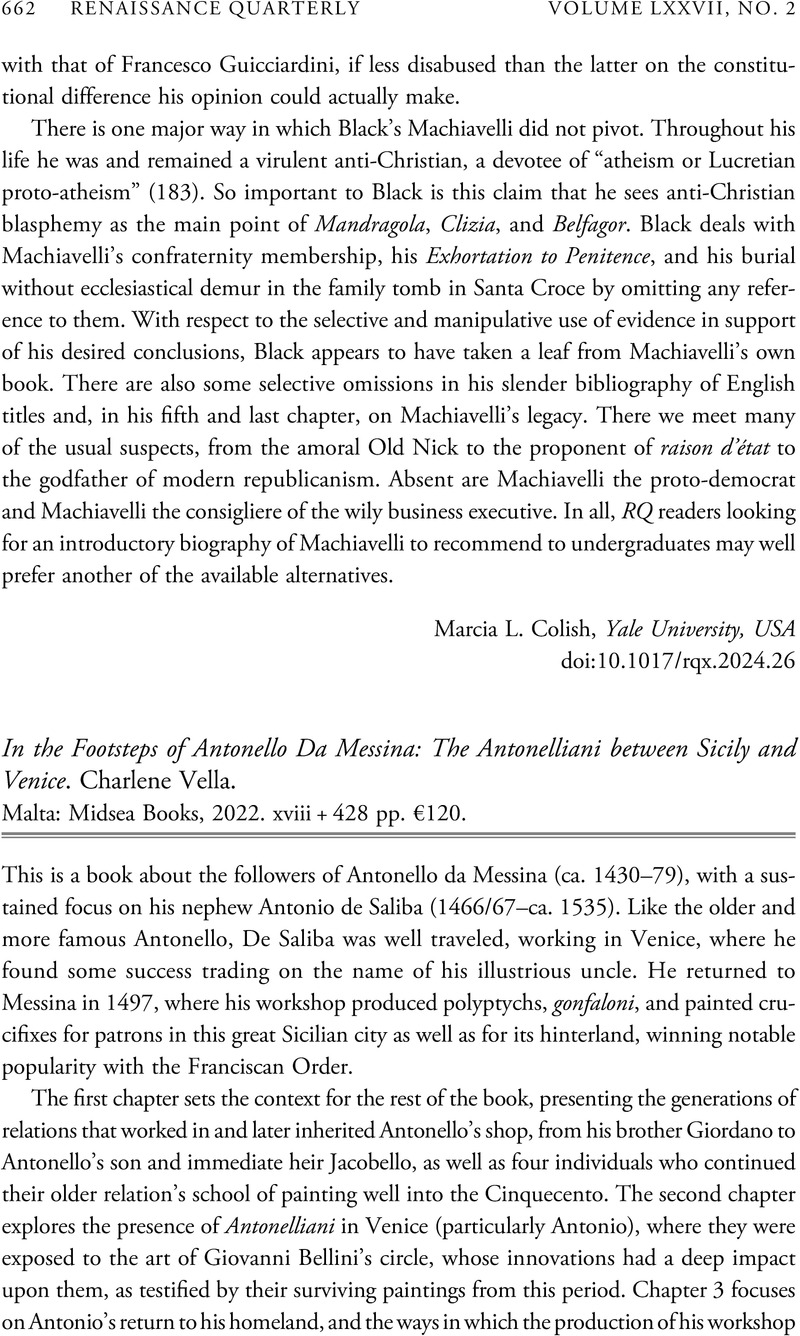No CrossRef data available.
Article contents
In the Footsteps of Antonello Da Messina: The Antonelliani between Sicily and Venice. Charlene Vella. Malta: Midsea Books, 2022. xviii + 428 pp. €120.
Review products
In the Footsteps of Antonello Da Messina: The Antonelliani between Sicily and Venice. Charlene Vella. Malta: Midsea Books, 2022. xviii + 428 pp. €120.
Published online by Cambridge University Press: 11 November 2024
Abstract
An abstract is not available for this content so a preview has been provided. Please use the Get access link above for information on how to access this content.

- Type
- Review
- Information
- Copyright
- Copyright © The Author(s), 2024. Published by Cambridge University Press on behalf of Renaissance Society of America



